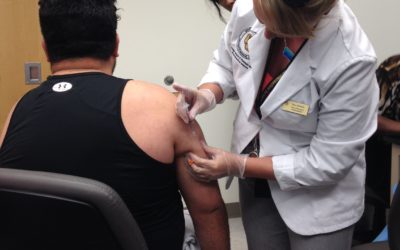Nexplanon is a long-acting reversible contraceptive (LARC) that offers women up to three years of protection against pregnancy. This small, flexible rod, inserted just under the skin of the upper arm, releases the hormone etonogestrel to prevent pregnancy. For women looking for a reliable and low-maintenance contraceptive option, Nexplanon can be an excellent choice.
What is Nexplanon?
Nexplanon is a tiny, matchstick-sized implant (about 4 cm long) that contains etonogestrel, a progestin hormone. Once inserted, it steadily releases small amounts of this hormone, which helps prevent pregnancy. Once inserted, Nexplanon provides continuous contraception for up to three years, making it a highly effective and long-term solution for those who prefer not to use daily, weekly, or monthly birth control methods such as the pill, patch, or ring.
How Does Nexplanon Work?
Nexplanon works by:
- Inhibiting Ovulation: It stops the release of eggs from the ovaries.
- Thickening Cervical Mucus: It makes it more difficult for sperm to reach the egg.
- Thinning the Uterine Lining: It reduces the likelihood of a fertilized egg implanting in the uterus.
These combined mechanisms make Nexplanon over 99% effective in preventing pregnancy, making it one of the most effective birth control methods.
Insertion and Removal
Insertion of Nexplanon is a quick procedure performed by a healthcare provider. The implant is inserted just below the skin using a small applicator. The process takes only a few minutes and causes minimal discomfort. Immediately after the implant has been placed, you and your healthcare provider should check that the implant is in your arm by feeling for it. If you and your healthcare provider cannot feel the implant, your healthcare provider will need to confirm that the implant is in place, which may require special tests.
See our blog about IUDs
Nexplanon can be removed by your healthcare provider at any time, typically after three years or earlier if you want to stop using it or switch to another contraceptive. Fertility typically returns quickly after removal, making it a what’s called a reversible option of birth control.
Who Should Consider Nexplanon?
Nexplanon is ideal for women who:
- Want long-term contraception without having to think about it daily or monthly.
- Prefer a hormone-based birth control option that doesn’t require estrogen.
- Want to avoid the risk of user error associated with oral contraceptives or other short-acting methods.
Nexplanon is not suitable for all women. Women with certain medical conditions or taking certain medications may not be candidates to use Nexplanon. It’s important to consult with a healthcare provider to ensure that Nexplanon is the right option for you.
Side Effects:
Like all hormonal contraceptives, Nexplanon can cause side effects. Common side effects may include:
- Irregular periods
- Headaches
- Weight gain
- Acne
- Mood change
Pros and Cons of Nexplanon:
Pros:
- Highly effective at preventing pregnancy.
- Long-lasting (up to three years).
- Requires no daily attention.
- Reversible, with fertility returning quickly after removal.
- Suitable for women who cannot use estrogen.
Cons: - May cause irregular menstrual bleeding.
- Requires a healthcare provider for insertion and removal.
- Can cause side effects such as headaches, mood changes, or weight gain.
Conclusion:
Nexplanon is a convenient, effective, and long-lasting contraceptive option for women who want reliable protection against pregnancy without the need for daily pills or frequent maintenance. While it can cause side effects, its benefits often outweigh the drawbacks for many users. If you’re considering Nexplanon, it’s important to consult with a healthcare provider to determine if it’s the right option for your contraceptive needs.
Resources:
1) NEXPLANON (etonogestrel implant) [package insert]. Whitehouse Station, NJ: Merck & Co Inc.; 2015.
2) https://my.clevelandclinic.org/health/articles/24564-contraceptive-implant
3) https://www.mayoclinic.org/tests-procedures/contraceptive-implant/about/pac-20393619












